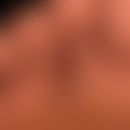Synonym(s)
DefinitionThis section has been translated automatically.
A particularly stubborn, often permanently itchy variant of atopic eczema with efflorescences as in Prurigo simplex subacuta. The disease occurs in 2 clinical variants:
- prurigo chlorescences with signs of atopic eczema
- Prurigoefflorescences without other signs of atopic eczema
ManifestationThis section has been translated automatically.
This variant is described in childhood and as a late manifested form in adulthood.
Atopic eczema first manifested in childhood and adolescence: 5-10% of patients affected.
Atopic eczema first manifested in adulthood (after the 18th year of life): 3.2% of patients affected.
You might also be interested in
Clinical featuresThis section has been translated automatically.
Mostly colorful clinical picture with sharply defined efflorescences of varying "acuteity" from "fresh to scarred healed".
Initial efflorescences (usually not detectable): "Urticarial", eminently itchy, 0.2-0.5 cm large, red papules. In most cases, however, there is no "precursor efflorescence" but only a stinging, agonizing, localized itching in normal-appearing skin.
Residual efflorescences (typical clinical findings): 0.3-0.5 cm large, centrally scratched and covered with a crust or fresh granulation tissue, moderately raised, red or reddish-brown papules. In addition, depending on the duration of the disease symptoms, scars of varying age, white or still reddened, more rarely hyperpigmented, the size of the pre-existing prurigo papules.
Typical is a punctual, excruciating itching, which is answered with an equally circumscribed and typical scratching reaction (spooning); afterwards, the itching stops abruptly. However, it is not uncommon for scratching automatisms to develop that are difficult to interrupt.
Remember! It is not the "disturbing efflorescences" but the localized, agonizing itching that leads to a doctor!
DiagnosisThis section has been translated automatically.
Clinical picture with evidence of the typical prurigoefflorescences (reddish-brown surface smooth or scratched papules)
Clarification of the family environment regarding atopic diseases
Clarification of atopic signs or additional atopic diseases (atopic rhinitis, atopic asthma, atopic food allergies, urticaria)
Confirmation of allergic diathesis by means of prick and RAST test.
TherapyThis section has been translated automatically.
S. Eczema, atopic.
It remains to be seen to what extent Dupilumab will be an effective therapeutic option in the treatment of this disease (Almustafa ZZ et al. 2019).
LiteratureThis section has been translated automatically.
- Almustafa ZZ et al(2019) Dupilumab in Treatment of Chronic Prurigo: A Case Series and Literature Review. Acta Derm Venereol doi: 10.2340/00015555-3243.
- Hashimoto Tet al. (2015) Protective Role of STAT6 in Basophil-Dependent Prurigo-like Allergic Skin Inflammation. J Immunol 194: 4631-4640
- Julián-Gónzalez RE et al (2012) Less common clinical manifestations of atopic dermatitis: prevalence by age. Pediatric Dermatol 29:580-583
- Ozkaya E (2005) Adult-onset atopic dermatitis. J Am Acad Dermatol 52:579-582
Incoming links (1)
Prurigo simplex subacuta;Disclaimer
Please ask your physician for a reliable diagnosis. This website is only meant as a reference.






